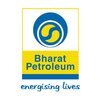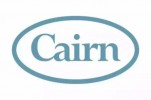Filter interviews by
GAIL Instrumentation Technician Interview Questions and Answers
GAIL Instrumentation Technician Interview Experiences
1 interview found
I applied via Naukri.com and was interviewed in Mar 2024. There was 1 interview round.
(2 Questions)
- Q1. Instrument Technician
- Q2. Personal Details
Top trending discussions






Interview questions from similar companies

I applied via Recruitment Consulltant
(2 Questions)
- Q1. I am electrical technician Offshor returner
- Q2. Diploma 12th
(1 Question)
- Q1. To

I applied via Company Website and was interviewed in Sep 2022. There were 4 interview rounds.
(4 Questions)
- Q1. How many years experience?
- Q2. What is tha qualification?
- Ans.
The qualification for an Instrumentation Technician typically includes a degree or diploma in instrumentation technology or a related field.
A degree or diploma in instrumentation technology or a related field is usually required.
Knowledge of electrical and electronic systems is important.
Experience with calibration and troubleshooting of instruments is often necessary.
Familiarity with industry standards and regulations...
- Q3. Is currently working?
- Q4. Before working company
(5 Questions)
- Q1. What is Thermocouple range?
- Ans.
Thermocouple range refers to the temperature range within which a thermocouple can accurately measure temperature.
Thermocouple range varies depending on the type of thermocouple used.
Common thermocouple types include J, K, T, E, and N.
For example, a type K thermocouple has a range of -200 to 1350 degrees Celsius.
It is important to select the appropriate thermocouple type for the temperature range being measured.
- Q2. What is anti surge valve?
- Ans.
An anti-surge valve is a control valve used in a compressor system to prevent surge and maintain stable operation.
An anti-surge valve is typically installed in the discharge line of a compressor.
It is designed to protect the compressor from surge, which is a phenomenon of unstable flow and pressure that can cause damage to the compressor.
The valve opens or closes based on the compressor's operating conditions to mainta...
- Q3. Are you working gas turbine?
- Ans.
Yes, I have experience working with gas turbines.
I have worked with gas turbines in my previous job as an instrumentation technician.
I am familiar with the maintenance and troubleshooting of gas turbines.
I have experience in calibrating and testing gas turbine sensors and instruments.
I have knowledge of the safety protocols and regulations related to gas turbines.
- Q4. How many types vibration is there in field?
- Ans.
There are three types of vibration in the field: axial, radial, and tangential.
Axial vibration occurs parallel to the axis of rotation.
Radial vibration occurs perpendicular to the axis of rotation.
Tangential vibration occurs at a right angle to both axial and radial vibration.
Vibration analysis is used to detect and diagnose problems in rotating machinery.
Excessive vibration can lead to premature failure of bearings, g
- Q5. Are you know that preventive maintenance jobs?
- Ans.
Yes, I am familiar with preventive maintenance jobs.
Preventive maintenance involves regularly scheduled inspections, cleaning, and repairs to prevent equipment breakdowns.
I have experience performing preventive maintenance on various types of instrumentation equipment, such as calibrators, transmitters, and controllers.
Examples of preventive maintenance tasks I have performed include checking for leaks, replacing worn ...
(2 Questions)
- Q1. Are you instrument technician?
- Q2. What kind of precautions need in Plant running time?
- Ans.
Precautions are necessary to ensure safe and efficient plant operation.
Regular maintenance of equipment and machinery
Proper training and certification of personnel
Strict adherence to safety protocols and procedures
Regular inspections and audits to identify potential hazards
Effective communication and coordination among team members
Use of personal protective equipment (PPE) as required
Emergency response planning and dri...
I am interested to work in maintenance field and troubleshooting
Interview Preparation Tips
- Gas Turbine
- Instrumentation Engineering
- Control Valves
- Sensors
- Transmitters
- PLC
- DCS Operation
- WMS

Instrumentation Technician Interview Questions & Answers
Saudi Aramcoposted on 5 Jul 2024
(1 Question)
- Q1. How much you earn
- Ans.
I earn a competitive salary based on my experience and qualifications.
My salary is based on my experience and qualifications
I receive compensation for my work as an Instrumentation Technician
I am satisfied with my current salary

I applied via Naukri.com and was interviewed before Oct 2017. There was 0 interview round.
Interview Preparation Tips
Skills: Communication, Body Language, Problem Solving
Duration: 1-4 weeks

Mechanical Technician Interview Questions & Answers
Bharat Petroleumposted on 26 May 2018
Interview Preparation Tips
Experience: aptitude reasoning and base techanical.
Round: Group Discussion
Experience: techanical core branch.

Interview Questionnaire
3 Questions
- Q1. How can you handle if there any emergency in production plant
- Ans.
In case of an emergency in production plant, I would follow the emergency protocol and take necessary actions to ensure safety.
Immediately alert the emergency response team and follow the established emergency protocol
Evacuate the affected area and ensure all employees are accounted for
Assess the situation and take necessary actions to contain the emergency
Communicate with management and stakeholders to keep them infor...
- Q2. What are the hazards in your plant and its controle
- Ans.
Hazards in the plant and their control
Chemical hazards: Proper storage and handling of hazardous chemicals
Electrical hazards: Regular inspection and maintenance of electrical equipment
Mechanical hazards: Implementation of safety guards and procedures
Fire hazards: Installation of fire detection and suppression systems
Ergonomic hazards: Providing ergonomic workstations and equipment
Noise hazards: Use of hearing protectio
- Q3. Type and details of permits
- Ans.
Permits required for production engineering
Building permits for construction and modification of production facilities
Environmental permits for compliance with regulations on emissions and waste management
Operating permits for the operation of specific equipment or processes
Safety permits for ensuring workplace safety and adherence to safety standards
Export permits for exporting products to other countries
Import permit...
Interview Preparation Tips
Experience: Oil and gas specifically from strong back ground like RELIANCE,GSPC

I applied via Naukri.com and was interviewed before Jun 2020. There was 1 interview round.
Interview Questionnaire
28 Questions
- Q1. What is mean by safety
- Ans.
Safety refers to the condition of being protected from harm, danger, or injury.
Safety involves taking measures to prevent accidents and injuries
It includes following rules and regulations to ensure a safe environment
Safety can be achieved through proper training and education
Examples of safety measures include wearing protective gear, using safety equipment, and practicing safe behaviors
Safety is important in all indus...
- Q2. What is LEL
- Ans.
LEL stands for Lower Explosive Limit and is the minimum concentration of a gas or vapor in air that can ignite.
LEL is a safety term used in industries dealing with flammable gases and liquids.
It is expressed as a percentage of the gas or vapor in air.
If the concentration of the gas or vapor is below the LEL, it is too lean to ignite.
If the concentration is above the LEL, it is too rich and can ignite.
For example, the L...
- Q3. What is RA
- Q4. What is JSA/JHA
- Ans.
JSA/JHA stands for Job Safety Analysis/Job Hazard Analysis. It is a process of identifying potential hazards and risks in a job or task.
JSA/JHA is a systematic approach to identify and mitigate potential hazards in a job or task
It involves breaking down a job or task into steps and analyzing each step for potential hazards
The analysis includes identifying the hazards, assessing the risks, and implementing controls to m...
- Q5. Role of HSE
- Ans.
HSE plays a crucial role in ensuring the safety and well-being of employees and the environment.
HSE stands for Health, Safety, and Environment.
It involves identifying and assessing potential hazards and implementing measures to control or eliminate them.
HSE also includes training employees on safety procedures and emergency response plans.
Examples of HSE measures include wearing personal protective equipment, conductin...
- Q6. What is Hchem
- Ans.
Hchem is not a known term or acronym in the engineering field.
Hchem is not a commonly used term in engineering
It is possible that the interviewer misspoke or meant to ask a different question
Without more context, it is difficult to provide a more specific answer
- Q7. What is Hazop
- Ans.
Hazop is a structured and systematic technique used to identify potential hazards and operability problems in industrial processes.
Hazop stands for Hazard and Operability Study
It involves a team of experts analyzing a process to identify potential hazards and operability issues
Hazop is commonly used in the chemical, oil and gas, and pharmaceutical industries
The process involves breaking down the process into smaller pa...
- Q8. What is confined space
- Ans.
Confined space refers to an area that is enclosed and has limited access and ventilation.
Examples include tanks, silos, sewers, and tunnels.
Workers entering confined spaces must follow safety protocols and use specialized equipment.
Hazards in confined spaces include lack of oxygen, toxic gases, and physical obstructions.
Proper training and communication are crucial for working in confined spaces.
- Q9. What is work at height
- Ans.
Work at height refers to any task performed at a height where a person could fall and injure themselves.
Work at height involves working on ladders, scaffolding, roofs, or any other elevated surface
It is important to use appropriate safety equipment such as harnesses, guardrails, and safety nets
Workers should be trained on how to safely work at height and how to properly use safety equipment
Examples of work at height in...
- Q10. Hazard of confined space
- Ans.
Confined spaces pose a significant hazard due to limited entry and exit points, poor ventilation, and potential for hazardous substances.
Limited entry and exit points can make it difficult to escape in case of an emergency
Poor ventilation can lead to a buildup of toxic gases or lack of oxygen
Potential for hazardous substances such as chemicals, fumes, or dust
Examples include tanks, silos, sewers, and tunnels
Proper trai...
- Q11. Precautions of confined space
- Ans.
Precautions to be taken while working in confined spaces
Proper ventilation and air quality testing
Use of personal protective equipment
Proper lighting and communication equipment
Training and certification for workers
Emergency rescue plan in place
- Q12. What is LEL&UEL
- Ans.
LEL&UEL stands for Lower Explosive Limit and Upper Explosive Limit respectively. They are the minimum and maximum concentrations of a flammable gas or vapor in air that can ignite.
LEL is the lowest concentration of a gas or vapor that can ignite
UEL is the highest concentration of a gas or vapor that can ignite
Concentrations between LEL and UEL are considered flammable
LEL and UEL vary depending on the gas or vapor
LEL an...
- Q13. What is competent person
- Q14. What is fire
- Ans.
Fire is a chemical reaction that releases heat, light, and various gases.
Fire is a rapid oxidation process that occurs when fuel (such as wood, paper, or gasoline) combines with oxygen in the presence of heat or a spark.
It releases heat, light, and various gases such as carbon dioxide, water vapor, and nitrogen oxides.
Fire can be beneficial (such as for cooking or heating) or destructive (such as in wildfires or house ...
- Q15. Types of fire
- Ans.
There are four types of fire: Class A, Class B, Class C, and Class D.
Class A fires involve ordinary combustibles such as wood, paper, or cloth.
Class B fires involve flammable liquids or gases such as gasoline, oil, or propane.
Class C fires involve electrical equipment such as appliances, wiring, or circuit breakers.
Class D fires involve combustible metals such as magnesium, titanium, or sodium.
- Q16. Type of extinguisher
- Ans.
There are different types of fire extinguishers for different types of fires.
Water extinguishers for Class A fires (wood, paper, cloth, etc.)
CO2 extinguishers for Class B and C fires (flammable liquids and electrical fires)
Dry chemical extinguishers for Class A, B, and C fires
Foam extinguishers for Class A and B fires
Wet chemical extinguishers for Class K fires (cooking oils and fats)
- Q17. Modes of heat transfer
- Ans.
Modes of heat transfer include conduction, convection, and radiation.
Conduction is the transfer of heat through a material without any movement of the material itself.
Convection is the transfer of heat through the movement of fluids, such as air or water.
Radiation is the transfer of heat through electromagnetic waves, such as from the sun or a fire.
- Q18. How to prevent fire
- Ans.
Preventing fire requires proper handling of flammable materials and regular maintenance of electrical equipment.
Store flammable materials in designated areas away from heat sources
Regularly inspect and maintain electrical equipment
Install smoke detectors and fire extinguishers in appropriate locations
Train employees on fire safety procedures and evacuation plans
- Q19. What is msds
- Ans.
MSDS stands for Material Safety Data Sheet.
MSDS provides information about hazardous chemicals and substances.
It includes information about the physical and chemical properties of the substance, health hazards, precautions for safe handling and use, and emergency procedures.
MSDS is required by law for all hazardous chemicals and substances used in the workplace.
It is important to read and understand the MSDS before usi...
- Q20. How to do firefighting
- Ans.
Firefighting involves identifying and extinguishing fires to prevent damage and loss of life.
Assess the situation and determine the type and size of fire
Use appropriate firefighting equipment such as fire extinguishers, hoses, and pumps
Follow safety protocols and wear protective gear
Coordinate with other firefighters and emergency responders
Evacuate people from the affected area
Monitor the situation and ensure the fire
- Q21. How to prevent the accident
- Ans.
Prevent accidents by identifying potential hazards and implementing safety measures.
Conduct regular safety audits and risk assessments
Provide proper training and education to employees
Implement safety protocols and procedures
Use appropriate safety equipment and gear
Encourage a culture of safety and accountability
Regularly review and update safety policies and procedures
- Q22. How to investigate the accident
- Ans.
To investigate an accident, follow a systematic approach involving data collection, analysis, and identification of root causes.
Gather all available information about the accident, including eyewitness accounts, photographs, and any relevant documents or records.
Conduct interviews with individuals involved in the accident to gather their perspectives and insights.
Examine the accident scene for physical evidence, such a...
- Q23. Emergency procedure
- Q24. What is H2s
- Ans.
H2S is a colorless, flammable, and toxic gas with a strong odor of rotten eggs.
H2S is commonly known as hydrogen sulfide.
It is produced naturally by the breakdown of organic matter and is found in natural gas, crude oil, and volcanic gases.
It is highly toxic and can cause respiratory failure, loss of consciousness, and even death.
H2S is used in various industries such as oil and gas, mining, and pulp and paper.
It is al...
- Q25. Properties of H2s
- Ans.
H2S is a colorless, flammable, and toxic gas with a strong odor of rotten eggs.
H2S is highly flammable and can ignite easily
It is toxic and can cause respiratory failure
It has a distinctive odor of rotten eggs
H2S is used in the production of sulfuric acid and in the petroleum industry
- Q26. Hirerchy procedure
- Q27. Permissible exposure limit of H2s,co,co2,methane
- Ans.
Permissible exposure limits (PEL) are the maximum allowable concentrations of hazardous substances in the workplace.
H2S: PEL is 10 ppm (parts per million) over an 8-hour workday
CO: PEL is 50 ppm over an 8-hour workday
CO2: No specific PEL, but recommended exposure limit is 5,000 ppm over an 8-hour workday
Methane: No specific PEL, but recommended exposure limit is 1,000 ppm over an 8-hour workday
- Q28. Short term exposure limit of H2s
- Ans.
Short term exposure limit (STEL) of H2S is 10 ppm.
STEL is the maximum concentration of a substance that a worker can be exposed to for a short period of time without suffering from immediate or long-term health effects.
The STEL for H2S is set at 10 ppm (parts per million) by OSHA (Occupational Safety and Health Administration).
Exposure to H2S at levels above the STEL can cause symptoms such as eye irritation, headache,...
Interview Preparation Tips

I applied via Company Website and was interviewed before Nov 2020. There were 4 interview rounds.
Interview Questionnaire
2 Questions
- Q1. What is safety define deeply
- Ans.
Safety is the state of being free from harm or danger.
Safety involves identifying and assessing potential hazards
It requires taking measures to prevent accidents and injuries
It involves following established safety protocols and procedures
Safety also includes being prepared for emergencies and knowing how to respond
Regular training and education on safety practices is crucial
- Q2. Safety is major parts of a industries because lack of proper safety mangement industries can't be run longer time. in chemicals industries most of safety required for no Accident of fire
Interview Preparation Tips

I applied via Naukri.com and was interviewed in Oct 2020. There were 3 interview rounds.
Interview Questionnaire
1 Question
- Q1. The HR round was very pathetic. Sreethala took my HR round.
Interview Preparation Tips
Mumbai location. They will take all the interview rounds. The HR will ask you to submit all documents and last moment they will cancel your candidature without giving you any specific reason.
GAIL Interview FAQs
Tell us how to improve this page.
GAIL Interviews By Designations
- GAIL Electrical Engineer Interview Questions
- GAIL Electrical Technician Interview Questions
- GAIL Graduate Apprentice Interview Questions
- GAIL Senior Engineer Mechanical Interview Questions
- GAIL Senior Engineer Interview Questions
- GAIL Executive Trainee Interview Questions
- GAIL Graduate Apprenticeship Trainee Interview Questions
- GAIL Apprentice Trainee Interview Questions
- Show more
Interview Questions for Popular Designations
- Control & Instrumentation Engineer Interview Questions
- Instrumentation Supervisor Interview Questions
- Senior Instrumentation Technician Interview Questions
- Manager Instrumentation Interview Questions
- Electrical & Instrumentation Engineer Interview Questions
- Assistant Manager Instrumentation Interview Questions
- Electrical & Instrumentation Technician Interview Questions
- QC Inspector Instrumentation Interview Questions
- Show more
GAIL Instrumentation Technician Interview Process
based on 2 interviews
Interview experience
Interview Questions from Similar Companies
Fast track your campus placements
GAIL Instrumentation Technician Reviews and Ratings
based on 9 reviews
Rating in categories
|
Graduate Apprentice Trainee
99
salaries
| ₹2.4 L/yr - ₹3 L/yr |
|
Field Operator
97
salaries
| ₹1.8 L/yr - ₹6 L/yr |
|
Senior Engineer
63
salaries
| ₹10.5 L/yr - ₹24 L/yr |
|
Technician
62
salaries
| ₹1.3 L/yr - ₹4 L/yr |
|
Senior Officer
59
salaries
| ₹13 L/yr - ₹30 L/yr |

Indian Oil Corporation

Bharat Petroleum

Hindustan Petroleum

Petrofac
- Home >
- Interviews >
- GAIL Interview Questions >
- GAIL Instrumentation Technician Interview Questions













